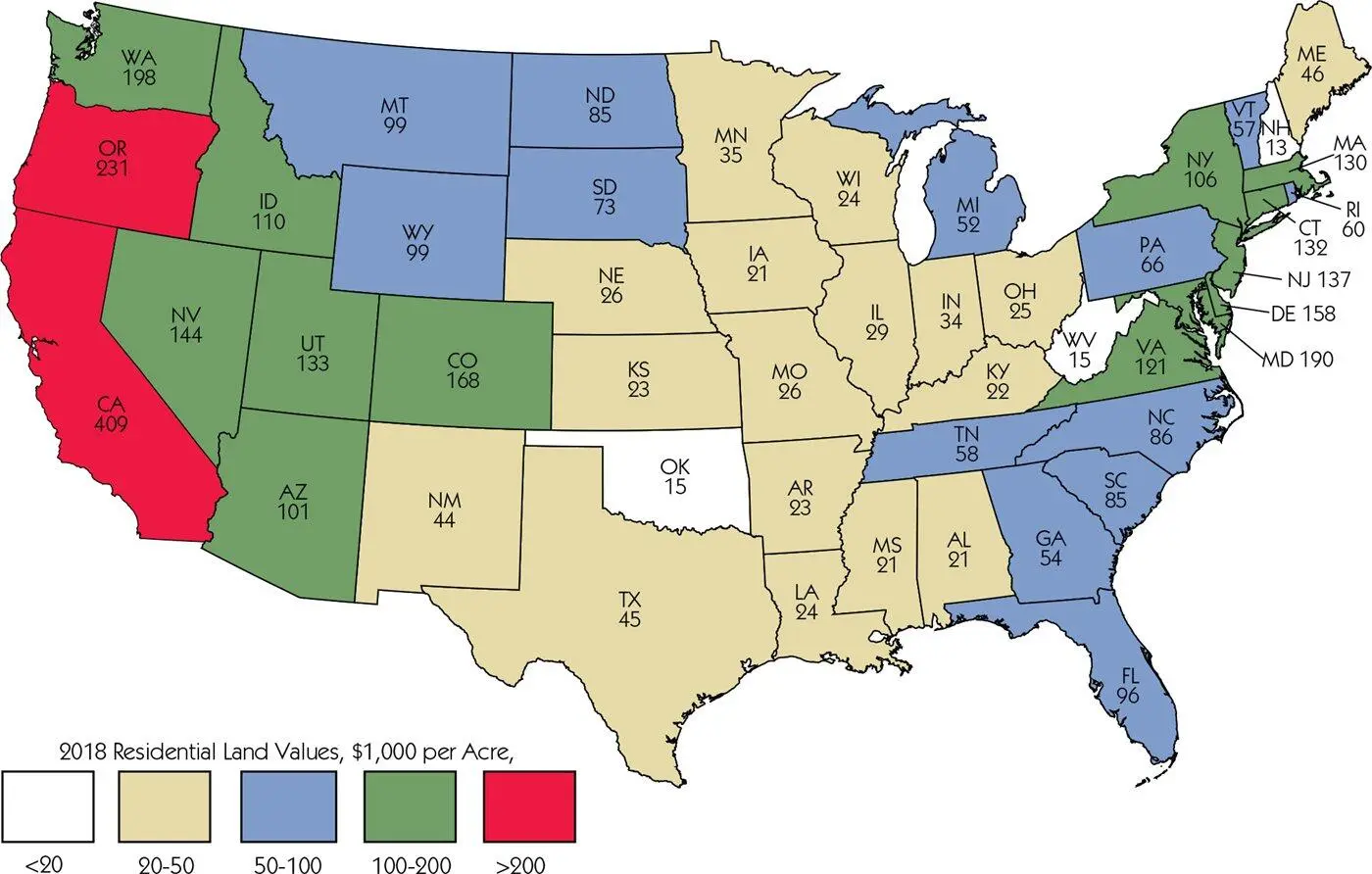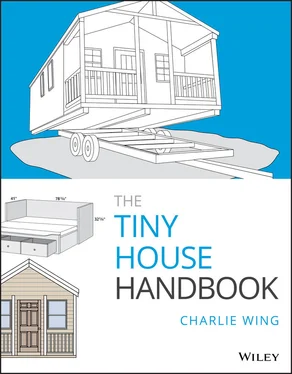One of the best tools the do-it-yourselfer can buy is a residential construction estimating book. A one-year-old copy of the Craftsman National Construction Estimator can be had on Amazon for about $30.
Where Does the Money Go?
Savings by Doing It Yourself
Using the data from the same National Association of Home Builders’ Single Family Price and Cost Breakdowns, 2015 National Results and assuming the cost of each material item consists of equal parts material and labor, results in the graph at right.
In addition to the use of less expensive materials, two ways for an owner to save significant money are to:
• assume the role of the general contractor in hiring and directing subcontractors, ordering materials, and securing permits and inspections.
• alternatively, perform every task as a do-it-yourselfer.
The first option saves about 20% in the general contractor’s overhead and general expenses, real estate marketing and commissions, and profit.
The much more labor- and required-skills-intensive option of doing it entirely one’s self saves the entire cost of labor for a total of about 50%.
Before entertaining either cost-saving option one is urged to perform an honest assessment of their knowledge, skills, dedication, and available time. Experience teaching hundreds of aspiring DIY homebuilders has taught the author three rules of thumb. The total person hours required to build a house are approximately:
• for the experienced builder, 1 hr./sq.ft.
• for an average “handyman,” 2 hr./sq.ft.
• for a complete novice, at least 3 hr./sq.ft.
Complete novices would be wise to first volunteer at their local Habitat for Humanity, where they would both pick up skills and get a better sense of the tasks they face.
How Much Can a DIYer Save?
Square Foot Construction Cost
The top curve in the graph below was generated by averaging current (2018) prices of new homes not including site over a size range of 100 sq.ft. to 2,000 sq.ft. and dividing the prices by the home’s square footage. Of course the data points displayed a lot of scatter, so the smooth curves represent the best fit. The green and blue curves were then generated by applying the percentage savings expected from owner contracting (green) and doing it all one’s self (blue).
The graphs demonstrate what should be intuitive: the smaller the house, the more expensive per square foot. The reason for this phenomenon is that kitchens, baths, heating and cooling systems, and so on are common to all homes, but are not strictly proportional to size.
The magnitude of the differences is seen in the two examples shown. The average contracted 200-sq.ft. house costs $300 per sq.ft., while the 1,800-sq.ft. home costs about half as much per sq.ft., $163.
Again, applying the savings from supplying labor, the owner-contractor (green curve) and the total do-it-yourselfer (blue curve) can reduce those numbers by approximately twenty and fifty percent.
Contracted vs Do-It-Yourself Costs/Sq.Ft. as a Function of Size
Of course the bottom line when building or buying a home is not cost per square foot but total cost. Total cost is simply cost per square foot × total square feet. The graph below is the result of performing this multiplication on the curves on the previous page.
Using the same two example homes, 1,800 and 200 square feet, we get $293,400 and $60,000 for the fully contracted versions. For the total do-it-yourself versions of the same homes we project $149,400 and $30,400— plenty of incentive for the prospective small-home DIYer!
If $30,400 doesn’t align with what you have heard, seen on television, or read in a magazine, remember: the figures in these graphs represent average figures for average construction. The use of less expensive grades and recycled or donated materials and appliances can lower these costs substantially.
Contracted vs Do-It-Yourself Total Cost as a Function of Size
The cost figures in the previous charts are for the building alone, not including the site and site services. Unless your planned tiny home is on wheels and you plan an eternal road trip, or your home will be an “accessory dwelling unit” sharing the site with an existing home, sooner or later you will have to purchase or rent a site on which to place the structure.
The map below displays the extraordinary range of prices of land in dollars per acre, from about $15,000 in rural areas such as New Hampshire, West Virginia, and Oklahoma, to over $400,000 in sunny California.
The numbers are not prices per lot but prices per acre , so you have to multiply by the size of the lot. Minimum lot size is specified in zoning ordinances and usually varies by zone. In rural and very affluent areas minimum lot sizes can be three or more acres, while densely populated areas may be zoned ¼ acre minimum.
Prices also vary widely within states. Lots within metropolitan areas are much more expensive than those in less developed areas. Lesson: do your homework! Websites such as Zillow.com allow unlimited research on your computer or mobile device.
2018 Residential Building Site Costs, $1,000 per Acre

More Added Costs: Site Services
Site services are all those things added to a lot to make the building/lot combination habitable. If the lot is in a development it may already have most or all services already. If not, here are the things you may have to add (see illustration below):
1. Public Water.If a public water main runs in front of your lot, you will be required to connect to it for a fee.
2. Well.If public water is not available you will need to drill a well or haul water.
3. Public Sewage.If a public sewer line runs past your lot, you will be required to connect to it even if the lot contains a private system.
4. Septic System.Unless public sewage is available or you use a composting toilet to eliminate “black waste” you will need a septic tank and leach field or a holding tank.
5. Electric Service.Unless you go off grid with a solar system, you will connect to the power line. Extending the existing line more than one or two poles is extremely expensive.
6. Driveway.You will probably want a solid, low-maintenance driveway. A 3-inch-thick asphalt drive costs about $10 per sq.ft.
7. Landscaping.Grading for drainage, a layer of topsoil, and a few shade trees are the minimal starting point.
Building Site Services
Added Costs: Impact Fees?
Impact fees comprise a fairly recent addition to the cost of building a home. In areas experiencing rapid growth, counties, cities, and towns are having to improve and expand roads, extend water and sewer lines, expand water and sewage treatment plants, add fire stations, develop parks and recreational facilities, and build additional schools.
The map shows where impact fees are most often assessed and the average fees imposed per home. It is not surprising to see the most and the highest fees occurring in the western, southwestern, and southeastern states where the population growth rate is greatest.
Читать дальше













